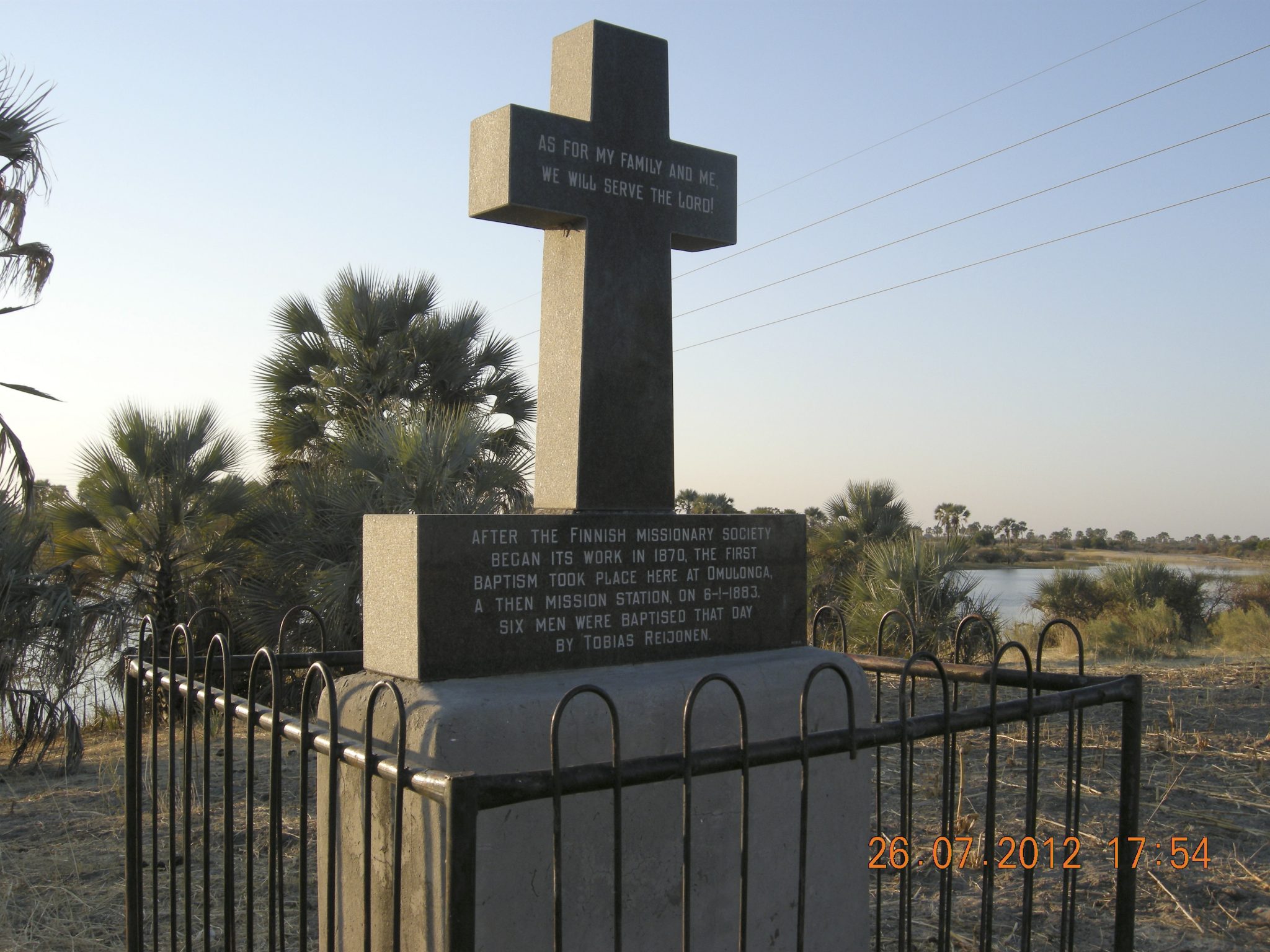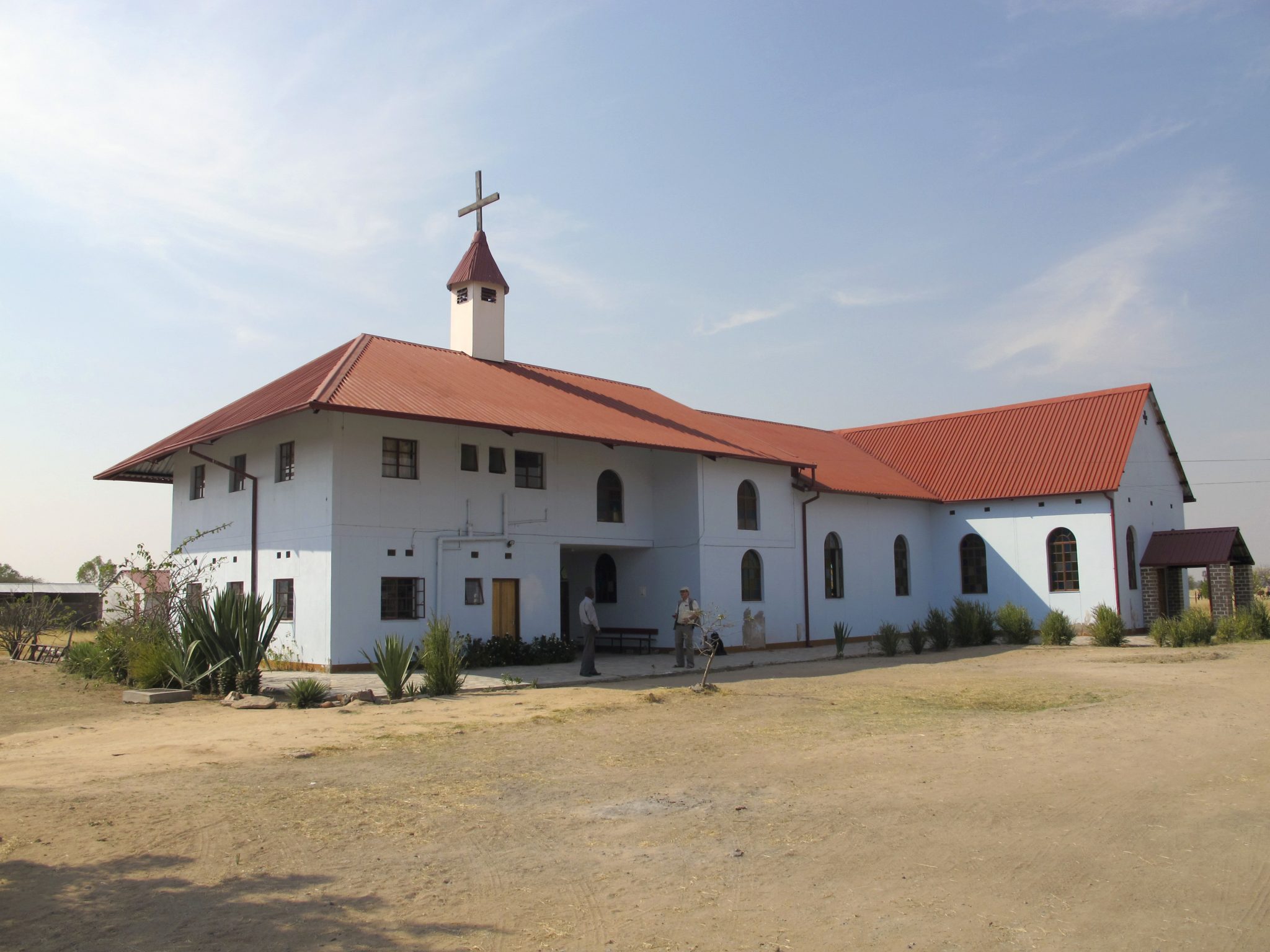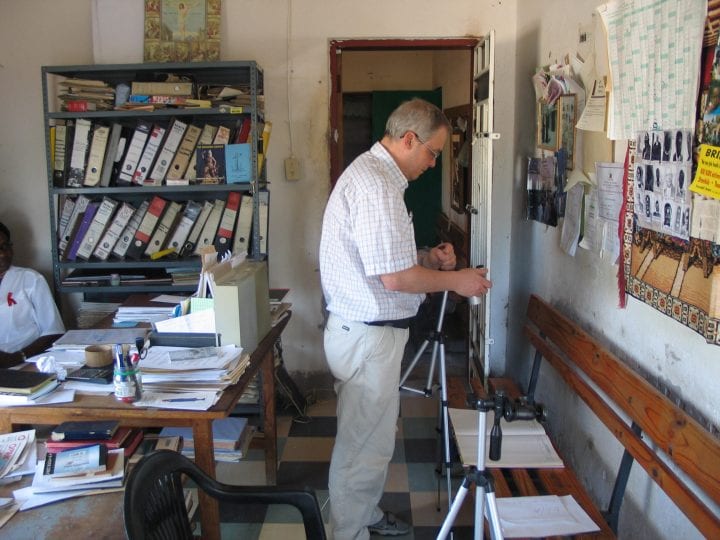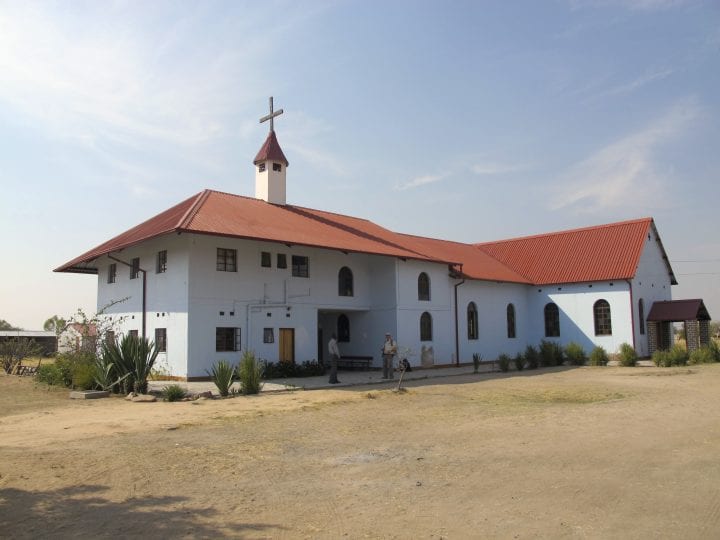ELCIN Parish Registers: A Trail to Namibia’s History and Culture
Harri Siiskonen
On a world-wide scale, Africa is the least-known continent in demographic terms. The population size of sub-Saharan Africa was not even precisely known until the mid-twentieth century. The major problems in African historical demography have either been the almost total lack of relevant sources, or, if some have been available, then they have been fragmentary and non-systematic. The reliability of the most commonly used sources in African historical demography – population counts and early censuses – remained questionable until the 1960s. However, far-reaching conclusions and estimations based on these sources using indirect methods have been drawn. The fragmentary nature of the available sources has offered a firm basis for the dialog.
A noteworthy, but rarely used, additional option for the collection of more accurate data at the individual level in relation to births, deaths, marriages and migrations is offered by the parish registers of African Christian churches. On the eve of the colonial invasion of the interior of Africa by European states hundreds of missionary stations were established in different parts of sub-Saharan Africa. Parish registers, annual reports, letters and diaries concerning the indigenous population were compiled at missionary stations. One of the biggest problems relating to parish registers in Africa is that they have sometimes suffered damage and sometimes simply disappeared due to poor storage conditions in local parishes. Despite the fact that the possibilities offered by the parish registers for historical demography in Africa have become quite well known, there has been no rush to examine these parish registers.
Another important limitation related to parish registers is the validity and reliability of the data. Despite commonly accepted principles for keeping parish registers, the practices of writing down vital events differed noticeably between parishes. Some priests, both European and African, were more interested in preaching to their parishioners and other important tasks than doing office work. However, when researchers have found undamaged and carefully-compiled registers, they have proved to be useful in both a demographic and social historical sense. Parish records are undoubtedly important, but have remained almost entirely unutilized.

Church registers of the Christian population have been kept since the first baptisms at the Omulonga mission station in 1883. Photograph: Harri Siiskonen.
Finnish Missionary Work
Today’s Namibia is one of the most Christianized countries in Africa. The first Finnish missionaries entered North-Central Namibia in 1869 and arrived at their mission field in Owambo in 1870. The success of missionary work can generally be read from the parish registers.
On the basis of the limited number of baptisms, it can be argued that the Finnish missionaries were not successful in the nineteenth century. The first Aawambo were only baptized in 1883 and the number of Christians remained very low until the beginning of the twentieth century. A new phase in Finnish missionary work only began during the first years of the 1900s, when new parishes were established in different Owambo communities. The number of parishes grew from 3 in 1900 to 12 by 1920. At the same time, the number of parishioners increased from 872 in 1900 to 7,695 in 1920. The Rhenish Missionary Society had also been working in the northernmost Owambo community, Uukwanyama, since 1891 in order to try and prevent the intrusion of Catholic missionaries from Portuguese Angola into German South West Africa. However, in 1915 the Rhenish missionaries were forced to withdraw from Owambo as a result of the knock-on affects of the First World War. South African troops defeated the Germans in July 1915 and the present Namibian territory then came under South African rule until Namibian independence. Until 1924 the Finnish Missionary Society (FMS) was the only missionary organization working in Owambo, at which time the South African Administration permitted both the Roman Catholic and Anglican missions to expand their work into the northern parts of present-day Namibia.
The arrival of the Roman Catholic and Anglican missions activated the work of the FMS in the 1920s. In the competition between the different missionary organizations the FMS proved to be the most successful. The administration of the Lutheran parishes was gradually transferred from the Finnish missionaries to native ministers. By the late 1930s almost all parishes were formally led by Aawambo ministers, and in 1933 the members of the Lutheran parishes accounted for about 26 per cent (28,506) of the estimated total population of Owambo (the 1933 census recorded a figure of 107,861). The last step on the way to an independent church was taken in 1954 with the establishment of the Evangelical Lutheran Ovambo-Kavango Church. During the 1950s, the proportion of Lutherans reached fifty percent in Owambo, and in present-day North-Central Namibia the Evangelical Lutheran Church in Namibia (ELCIN) occupies the dominant position. In 1991, over two-thirds of the population of the former Owamboland region were members of the ELCIN. The actual share of ELCIN members of the total population of North-Central Namibia is lower because a growing number of members of the ELCIN parishes live permanently outside the region, but are still members of their home parish. Taking this error into account, Lutherans still form the largest religious group in North-Central Namibia, which makes the data collected from the ELCIN parish registers representative for investigating population development.
Parish Registers and Demographic Research
What makes the ELCIN parish registers even more interesting is the fact that population registration has been based on the same principles since it was first employed. The wealth of data in Scandinavian parish registers has been recognized among historical demographers. Until the 1940s notes on vital registers in the Evangelical Lutheran parishes in Owambo were written on forms sent from Finland. The language used in the register forms has changed from Finnish to Afrikaans and English and to the local Ndonga language.
However, the ELCIN parish registers did not attract academic interest until the 1960s. The Finnish anthropologist Maija Tuupainen was the first to systematically utilize the ELCIN parish registers in her 1970 doctoral dissertation, which dealt with marriage practices in the Aawambo communities. In the early 1990s the ELCIN parish registers were “rediscovered” a second time. The Finnish-Namibian project on fertility, mortality and migration concentrated on analyzing long-term changes in the key indicators of population development in Owambo. Changes in fertility, mortality and migration from the mid-1920s until the turn of the 1990s were emphasized in the first phase of the project. During the second phase research has been focused on analyzing the impact of HIV/AIDS on mortality and fertility from the early 1990s.
The data used in these studies were acquired by microfilming parish registers of the selected ELCIN parishes. The documentation part of the project started in 1993, when the registers of two old parishes (Elim and Oshigambo) were microfilmed. The encouraging experiences gained from the pilot project was a spur to expanding the microfilming. In 1994, the records of five old parishes in different parts of Owambo were microfilmed. Microfilming continued in 1997 and 2001 by filming nine new parishes in the former Owamboland and Kavango regions. Church registers of the 16 ELCIN parishes in microfilm form are now available. At the end of 1991 there were 90,830 members in the microfilmed sample parishes. This means that the microfilmed data at the time covered almost 11% of the total population of the former Owamboland and almost 18% of the total population of the Kavango region. The master copy of the microfilmed data is stored at the National Archives of Namibia in Windhoek. Users’ copies of the data are available at the Auala ELCIN Library in Oniipa (Namibia) and at the Archives of the Department of Geographical and Historical Studies of the University of Eastern Finland.

The new church building of the Nakayale congregation. Photograph: Harri Siiskonen.

The church registers of ELCIN parishes are stored in office rooms due to lack of special archival space. Professor Veijo Notkola photographs the church registers of Elim parish. Photograph: Harri Siiskonen.
The ELCIN parish registers provide a much longer-term perspective on population development in Namibia than the available census and survey data, on which the analyses of population development in north-central Namibia have previously been based. In 1926 the colonial administration tried to correct the previous inaccurate estimates of the population living in Owambo by carrying out a “rough census.” The main aim of the census was to chart the labor potential of Owambo to be recruited for the mines located in central and southern parts of the country. The census was implemented by counting all homesteads. A sample of homesteads were also selected to count the number of inhabitants (men, women and children) as well. The result of the 1926 “rough census” was a revision of the estimate of the total population of Owambo to 126,800. Since 1951, censuses have been carried out at ten-year intervals. According to the 1991 census the population of the area was 618,117 persons, covering about 44% of Namibia’s total population (in 1991 the total population of Namibia was 1.4 million, in 2017 it was 2.6 million). However, before the 1950s it was impossible to present any detailed figures concerning the key indicators of population development in north-central Namibia on the basis of the available census data.
The ELCIN parish registers enable us to take a significant step forward when studying long-term changes in population development in Owambo. The analysis of fertility, mortality and migration can be traced back to the 1920s. Fertility in Owambo was close to the natural fertility rate and couples did not use contraception or abortion before the 1980s. In spite of this, a noticeable decline and increase in fertility occurred between 1930 and 1980, which has been impossible to indicate by means of the census data. A comparison of the results of the fertility analysis from the last two decades to the latest censuses and survey figures indicated that parish record data gave slightly lower fertility estimates, but otherwise the parish record data was very reliable. This might be due to missing births in the parish register material.
When considering the transition of mortality the parish record data documents significant discontinuities and reversals in the mortality trend in Owambo. Only inconclusive evidence existed concerning any decline in mortality of adults before the early 1950s. Unlike adult mortality, infant and child mortality probably fell in every decade examined except the 1940s. For children as well as adults the period between 1950 and 1965 showed a particularly rapid decline in mortality. The transition to a moderately low mortality rate was largely complete by the late 1960s. The great benefit of parish records is that they enable us to analyze mortality transition in different age groups with direct methods as early as the first half of the twentieth century. This has been impossible with the census data. Parish registers have also proved to be excellent sources when investigating the impact of AIDS on mortality. Unlike the sentinel surveys and hospital statistics, upon which estimates of AIDS mortality are normally based and represent small special groups of the population, parish registers cover all age groups in a certain area. However, parish registers do not accurately tell which of the parishioners has died of AIDS. A comparison of mortality rates in different age groups before and after the appearance of AIDS reveals the spread of HIV/AIDS on the local level. The impact of HIV/AIDS is not restricted to mortality only, but clearly reflects fertility.
Investigation of migration has been very problematic using census data and population counts. Data from parish records does not solve all the problems related to the analysis of migration. This data, however, does permit us to go much deeper than has been possible using the “traditional sources.” The ELCIN parish registers are at their best when analyzing intra- and inter-community migration. The migration analysis revealed that moves firmly concentrated around the marriage contract and the distances of the moves were short. For males the most important cause of the move was access to land. However, during the last decades of South African rule the reliability of parish registers for investigating migration weakened noticeably due to an increase in uncontrolled and illegal interregional migration within Namibia. At the time of Namibian independence all restrictions on internal migration were lifted. Today many people live far away from their home parishes on a permanent basis, but have retained their membership in the region in which they grew up. In spite of the limitations related to registers of in- and out-migrants in the recent past, parish registers are excellent sources for investigating internal migration during the first half of the twentieth century.
Unutilized Sources in Historical and Cultural Studies
The example presented above clearly shows the possibilities parish registers can offer for historical demography if the available records have been systematically maintained. The great obstacle to the use of African parish registers is that someone has to find relevant documents and then use them. Utilization of parish registers is not only restricted to historical demography. They also offer an opportunity for social historians, anthropologists, medical scientists, linguistics, etc. to deepen the analysis of African societies with accurate empirical data on an individual level. Minna Saarelma-Maunumaa’s doctoral dissertation on names as links between African and European anthroponymic systems, based on ELCIN parish registers, is a good indication how parish registers can be utilized for different kinds of research purposes. Urbanization is proceeding fast in Namibia and links to the extended family system are expected to weaken at the individual level. It is foreseeable that in the future urbanized Namibians will become interested in their own roots, which means that parish records will be sought-after sources among African genealogists. One of the pioneers has been Dr. V. V. Nambala, the presiding Bishop of ELCIN. In addition to oral sources, he has utilized church registers in studying Aawambo genealogies. Parish registers are the first written sources in sub-Saharan Africa to merely describe the life of African people. It is not an exaggeration to say that there is an urgent need to document parish registers in different parts of sub-Saharan Africa.
Bibliography
Buys, G. L. and Nambala, Shekutaamba V. V., History of the Church in Namibia 1805–1990: An Introduction. Windhoek: Gamsberg Macmillan, 2003.
Demography from Scanty Evidence: Central Africa in the Colonial Era. Ed. Bruce Fetter. Boulder and London: Lynne Rienner, 1990.
Notkola, V. and H. Siiskonen, Fertility, Mortality and Migration in SubSaharan Africa. The Case of Ovamboland in North Namibia, 1925–90. Basingstoke: Macmillan, 2000.
Notkola, V., I. M. Timaeus and H. Siiskonen, Impact on Mortality of the AIDS Epidemic in Northern Namibia Assessed Using Parish Registers. AIDS 18, 2004: 1061–1065.
Peltola, M., Suomen Lähetysseuran Afrikan työn historia II. Sata vuotta suomalaista lähetystyötä 1859–1958. Eds. M. Peltola, T. Saarilahti and P. Wallendorf. Helsinki: Suomen Lähetysseura, 1958.
Saarelma-Maunumaa, M., Edhina ekogidho – Names as Links: The Encounter between African and European Anthroponymic Systems among the Ambo People in Namibia. Helsinki: Finnish Literary Society, 2003.
Shemeikka, R., Fertility in Namibia: Changes in Fertility Levels in North-Central Namibia, Including an Assessment of the Impact of HIV. Helsinki: Population Research Institute, 2006.
Shemeikka, R., S. Iipinge, N. Indongo, H. Siiskonen, T. Torkko and V. Notkola, Reproductive Health in Southern Africa: Government Policies and Changes in Sexual and Reproductive Health and Rights, Final Report. Helsinki: Rehabilitation Foundation, 2009.
Siiskonen, H., Trade and Socioeconomic Change in Ovamboland, 1850–1906. Helsinki: Societas Historica Fennica, 1990.
Tuupainen, M., Marriage in a Matrilineal African Tribe: A Social Anthropological Study of Marriage in the Ondonga Tribe in Ovamboland. Transactions of the Westermarck Society 18. Helsinki, 1970.
About the Author
Harri Siiskonen is Professor of General History and Academic Rector of the University of Eastern Finland. His research specializes the social, population and environmental history of southern African from a Nordic context.

